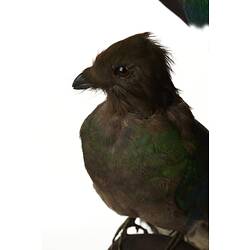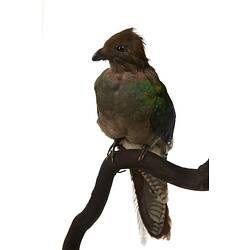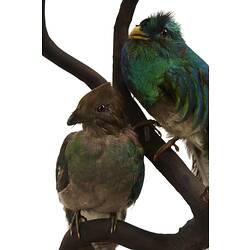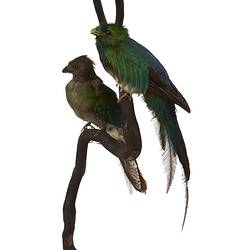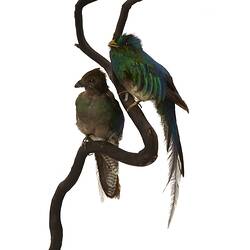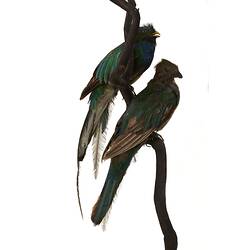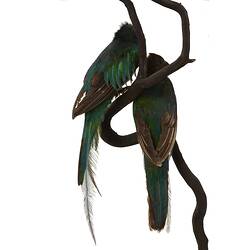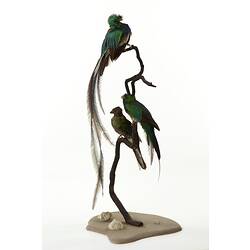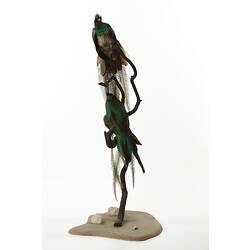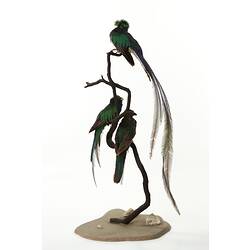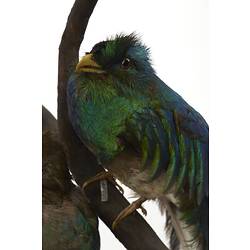Summary
Resplendent Quetzales occur throughout the montane cloud-forests of Central America from Mexico to Panama. Both male and female Resplendent Quetzales are brilliantly iridescent green, blue and red. During the mating season the males grow twin tail feathers that are up to a meter long, twice as long as his body.
This specimen, a female, was collected at an unknown date from Guatemala. It was purchased by the Museum from the famous British ornithologist and bird artist, John Gould (1804-1881) between 1858 and 1869.
This species was sacred to the Maya and Aztec peoples of the region, being associated with the god Quetzalcoatl. Today it is the national bird of Guatemala, pictured on the Guatemalan flag and the namesake of the Guatemalan currency.
Estimates suggest there are fewer than 50,000 Resplendent Quetzales in the wild. Populations appear to be declining, largely due to widespread deforestation and in some areas from hunting. The International Union for Conservation of Nature (IUCN) therefore considers the Resplendent Quetzal to be Near Threatened. It is also listed in Appendix I of the Convention on International Trade in Endangered Species (CITES) to ensure that international trade does not threaten it with extinction.
Specimen Details
-
Collection Names
-
Taxon Name
-
Preferred Common name
Resplendent Quetzal
-
Number Of Specimens
1
-
Sex
Female
-
Specimen Nature
Nature: Mount, Form: Dry
-
Collected By
Unknown
-
Category
-
Scientific Group
-
Discipline
-
Collecting Areas
-
Type of Item
Taxonomy
-
Kingdom
-
Phylum
-
Subphylum
-
Class
-
Order
-
Family
-
Genus
-
Species Name
mocinno
-
Subspecies
mocinno
Geospatial Information
-
Country

